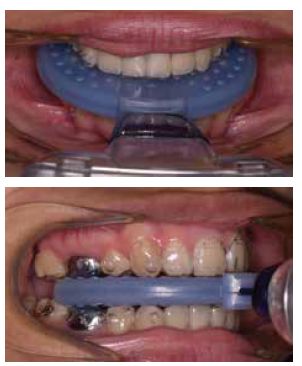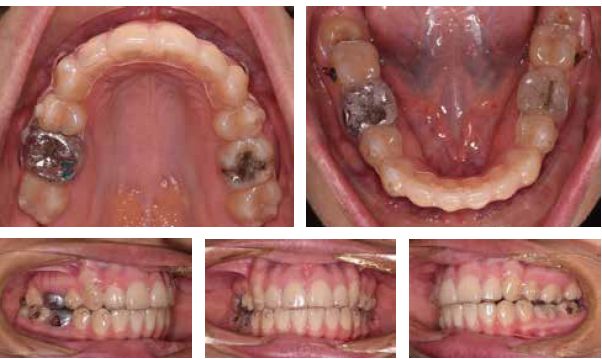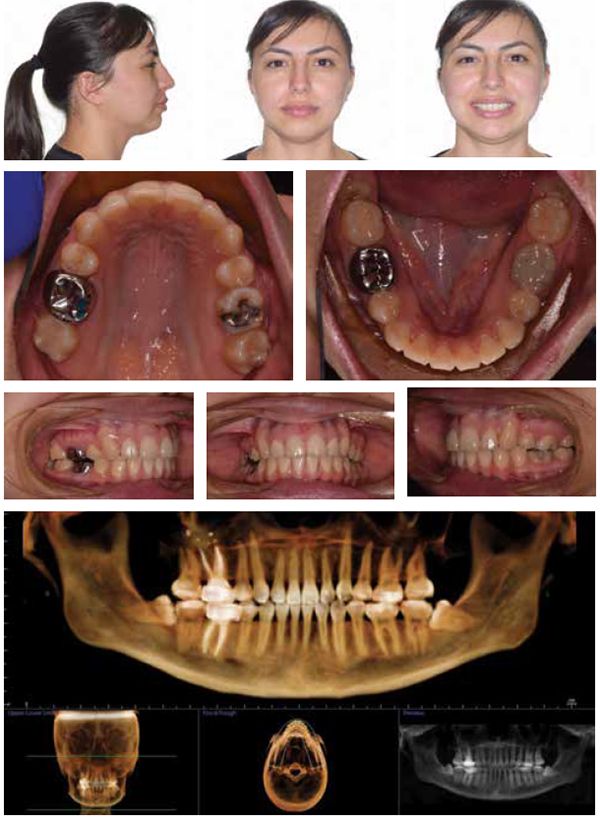Dr. Thomas Shipley discusses the advantages of high-frequency vibration
As an orthodontist, my goal is to devise treatment plans that result in beautiful, straight smiles. My patients and I also have an additional goal — of completing treatment as quickly as possible. My practice has boomed with the use of manual osteo-perforations (MOPs) with Propel’s Excellerator drivers, which, in my opinion, is still the gold standard for aiding orthodontic tooth movement. Now, I am using another product, VPro5™, an aligner seating vibration device from Propel. Ensuring that my patients are fully seating their aligners has resulted in more predictable treatment.
Over the years, I have explored ways of improving orthodontic treatment, I originally integrated accelerated orthodontic treatment through Wilckodontics®, Accelerated Osteogenic Orthodontics™ (AOO). Although I only pursued this treatment on a limited amount of patients, I had incredible results. However, due to the invasive nature of AOO, I reserved its use for for the most severe malocclusions, usually also requiring bone grafting. Next, I turned to MOPs, using Propel’s Excellerator Drivers, so that patients could attain movement with a less invasive procedure. This allowed me to offer the benefits to a wider array of patients, including a range of mild Class I patients to some of the most severe malocclusions. Patients reported very little discomfort, and I could complete the procedure with just a few minutes of doctor time. Especially with my Invisalign® cases, it was a great leap forward. But even though 70%- 80% of my adult Invisalign patients accepted MOPs as a course of treatment, the remaining 20%-30% still desired a treatment that was even less invasive. Then, I discovered VPro5.
VPro5 uses high-frequency vibration for better seating of the aligners. This, in turn, helps the teeth track better with the Invisalign trays, leading to more predictable results. As an additional benefit, because the aligners were fitting better to the teeth, I was needing fewer refinements and was able to treatment plan for more difficult movements.
With use of the VPro5 to seat aligners, I am able to offer my aligner patients the following advantages:
- More treatment predictability
- Less refinements
- Less discomfort
- Better patient compliance with a 5-minute usage time
- Greater patient satisfaction
Besides the benefits to the patients who are reporting less aligner discomfort because the aligners fit better, I also experience more efficient orthodontic workflow. Because the aligners are seating and tracking better, I can spend less time in each aligner. Now, because of better seating, my patients are changing their aligners faster.
Why efficient aligner seating is so important
Efficient aligner seating is one of the most important aspects of clear aligner treatment. Align Technology has become very sophisticated in delivering orthodontic forces in very specific ways. If the trays are not adequately seated, the plastic can lose its grip around the teeth. As a result, the forces cannot be properly delivered. If this happens, the teeth could move in an unplanned or non-advantageous direction.
Aligners should be inspected during every visit to make sure that the teeth are tracking properly in the aligners. The easiest method is a visual inspection, making sure that the teeth are fitting snugly and that there is no airspace between the aligner and the teeth. It is also important to check that the Invisalign attachments that are bonded to the teeth are seated within the attachment wells. If the aligners aren’t seated well over the attachments, then the forces aren’t going to be delivered correctly to the teeth. Under certain circumstances, if it is too difficult to get a visual inspection, you can take a pencil or articulating paper and darken the attachments in order to see them more clearly once the trays are placed over the attachments. After the inspection, the marks can be wiped off with a cotton swab dipped in alcohol.
Because proper aligner seating is so integral to proper tooth movement, the VPro5 is an excellent seating tool to help achieve the movements that we planned and eliminate unwanted tooth movements.
Patients’ nightly protocol
Each night the patient is expected to wear the VPro5 for 5 minutes after putting their aligners in for the last time of the day. For some, that may be bedtime; for some, that may be after dinner. My intention is for them to put the vibration device in before they expect to sleep, which should be the time that the aligner is in the mouth for the longest continuous period of time during the day.

Another benefit that I found with the VPro5 is that its recommended use time is 5 minutes which results in better patient compliance. I am able to confirm patient compliance by accessing data from the device. I understand time constraints from my own life and family — most adults in the prime Invisalign age group are very busy professional people as well as parents with children, and they do not have many minutes out of their day to sit with a vibration device in their mouth. With VPro5, set at 120 hertz, they can use the aligner seater for 5 minutes. I am getting a higher compliance rate with the VPro5.
The VPro5 offers benefits for everyone involved in the treatment:
Patients become more involved in a positive way. My patients have been very compliant and have a more positive outlook for their treatment because they are taking on a more active role than just putting in their aligners. They are able to accomplish their task in 5 short minutes and are proud that they can get it done. They get excited and talk about these technologies. The highest referral group in my office had treatment including MOPs and/or VPro5.
Orthodontists benefit because the device can be plugged in during the patients’ appointment to recall the results. Patients know they will be held accountable, and that helps to motivate them. We plug it in at every visit and attach the results to the patient’s chart.
I have used VPro5 for mild to moderate cases, and am starting to use it on patients with more complicated malocclusions. Better aligner seating with VPro5 increased the complexity of the Invisalign cases that I am able to accept.
The following case illustrates the progress of one of my first VPro5 patients. A 25-year-old female adult patient presented with a Class I, mild upper-crowding, and moderate lower-crowding malocclusion. Minor tooth wear was also present (Figures 1-9).


The patient chose to be treated with Invisalign. An iTero® digital scan was completed and submitted to Align Technology. Class I molars but slight Class II canines were noted on the initial ClinCheck®. No changes were made to the initial ClinCheck other than to add hooks and cutouts for Class II elastics. Twenty-four (stage 25 is an occlusal jump due to elastics) active aligners were prescribed with attachments to be placed for aligner 3 (Figure 10).
Aligners 1 and 2 were delivered, and the patient wore each for 2 weeks. At aligner 3, 4 weeks after the initiation of treatment, attachments were bonded, and the patient began Class II elastic wear. The Propel VPro5 was delivered. The patient followed the proceeding protocol by placing the aligners for the last time for the evening, using the VPro5 device for 5 minutes with the aligners in place. The patient did not remove the aligners again until the morning. The patient was asked to wear each subsequent aligner for 5 days each (Figures 11 and 12).
Figures 13-17 show the final results with aligners 25 seated in place. The aligners are seating perfectly after the patient wore each aligner for 5 days each.

The case was completed in 20 weeks, including the first month with 14-day aligner changes. No refinement was needed. The lower crowding was resolved, and the Class II canines were corrected with Class II elastics to a Class I relationship. Minor enameloplasty was completed to resolve irregular upper incisor edges from occlusal wear. The patient is to be credited with excellent aligner wear, elastic wear, and VPro5 compliance. The patient reported less discomfort after starting usage of VPro5 and changing aligners every 5 days. Overall, she stated the VPro5 was easy to use, comfortable, and reliable (Figures 18-26).

This information is sponsored and provided by Propel Orthodontics.
Stay Relevant With Orthodontic Practice US
Join our email list for CE courses and webinars, articles and mores

 Thomas Shipley, DMD, received his bachelor of science degree in Business Management from Brigham Young University and earned his doctorate from the University of Kentucky’s College of Dentistry. Dr. Shipley completed a master’s program in Orthodontics at West Virginia University and has been providing outstanding orthodontic care in Peoria, Arizona, and surrounding areas since 2005.
Thomas Shipley, DMD, received his bachelor of science degree in Business Management from Brigham Young University and earned his doctorate from the University of Kentucky’s College of Dentistry. Dr. Shipley completed a master’s program in Orthodontics at West Virginia University and has been providing outstanding orthodontic care in Peoria, Arizona, and surrounding areas since 2005.
